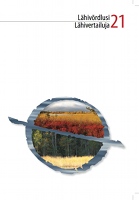The acquisition of the Hungarian definite conjugation by learners of different first languages
The acquisition of the Hungarian definite conjugation by learners of different first languages
Author(s): Péter Durst, Boglárka JanurikSubject(s): Language and Literature Studies
Published by: Eesti Rakenduslingvistika Ühing (ERÜ)
Keywords: second language acquisition; L1 influence; agreement; definite objects; target language environment; Mordvin; Hungarian
Summary/Abstract: This paper aims to examine whether the fact that both the Hungarian and the Erzya-Mordvin languages distinguish between definite and indefinite verb conjugation facilitates acquisition. Data was collected a) from a group of 83 language learners of various L1s and b) from 11 learners whose L1 is the Erzya-Mordvin language, using a questionnaire containing 210 test questions. Contrastive analysis of the Hungarian and the Mordvin definite object complexes reveals several differences between the two systems which make it difficult for learners to rely on analogies when deciding on the type of conjugation. Our results suggest that the time spent in the target language environment helps learners acquire the use of the definite conjugation, especially in the most difficult cases where an implicit object is implied by the context.
Journal: Lähivőrdlusi. Lähivertailuja
- Issue Year: 2011
- Issue No: 21
- Page Range: 19-44
- Page Count: 25
- Language: English

